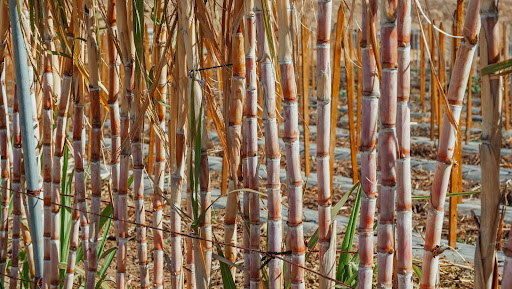Some people prefer beet sugar vs cane sugar for its believed health benefits and minimal processing.
Discover the Uses and Benefits of Beet Sugar Vs Cane Sugar in Your Daily Diet Regimen
Discovering the unique top qualities of beet and cane sugar reveals greater than simply their sweetening abilities; it highlights their distinct impacts on health and culinary arts. Beet sugar, recognized for its refined taste, is commonly favored in fragile desserts, whereas cane sugar, with its tip of molasses, adds splendor to robust recipes. Each type holds its very own dietary profile and glycemic effects, welcoming a deeper understanding of their functions in a balanced diet plan and lasting usage techniques.
Beginning and Production Procedures of Beet and Cane Sugar

The distinct environments and soil types needed for growing sugar beetroots and sugarcane contribute to distinctions in their cultivation methods and geographic distribution, influencing the business economics and sustainability of their production. beet sugar vs cane sugar.
Nutritional Contrast Between Beet Sugar and Cane Sugar
Regardless of originating from different plants, beet sugar and cane sugar are nutritionally really similar, both primarily including sucrose. Each provides regarding 4 calories per gram, translating to approximately 16 calories per tsp. Structurally, both sugars are composed of roughly 99.95% sucrose, with marginal quantities of other materials like moisture and trace element, which do not considerably change their nutritional profiles.

Inevitably, when picking in between beet sugar and cane sugar based upon dietary content alone, both offer similar advantages and downsides as they are essentially types of the very same particle-- sucrose, providing quick energy without other nutrients.
Influence on Wellness: Glycemic Index and Caloric Material
Exploring better right into the impacts of beet sugar and cane sugar on health and wellness, it is essential to consider their glycemic index and caloric web content. The glycemic index (GI) of both beet and cane sugar is around 65, classifying them as high-GI foods, which can trigger quick spikes in This Site blood glucose degrees.
Each sort of sugar includes about 4 calories per gram, making their calorie content matching. For those keeping an eye on caloric consumption, especially when taking care of weight or metabolic wellness click for info conditions, recognizing this equivalence is important (beet sugar vs cane sugar). However, extreme consumption of any type of high-calorie, high-GI food can add to health and wellness concerns such as weight problems, heart disease, and insulin resistance.
Environmental and Economic Factors To Consider of Sugar Production
Beyond health effects, the manufacturing of beet and cane sugar also elevates significant ecological and economic issues. Sugar beet farming tends to call for cooler climates and has a lower geographical impact compared to sugar cane, which flourishes in exotic areas. However, both plants are extensive in terms of water usage and land line of work, potentially resulting in logging and water deficiency. Financially, the global sugar market is extremely unstable, affected by adjustments in worldwide profession policies and subsidies. Numerous nations incentivize sugar production through economic assistance, skewing market value and impacting small farmers negatively.
Furthermore, making use of chemicals and plant foods in both beet and cane sugar farming can lead to soil degradation and contamination, additional affecting biodiversity and local water bodies (beet sugar vs cane sugar). The selection in between growing sugar beet or cane frequently depends upon regional environmental conditions and economic variables, making the sustainability of sugar manufacturing a complicated problem
Culinary Applications and Taste Distinctions
While the ecological and economic facets of sugar manufacturing are without a doubt Your Domain Name considerable, the selection between beet and cane sugar also influences culinary applications and taste profiles. Beet sugar, acquired from the sugar beet plant, is recognized for its remarkably neutral preference.
Walking cane sugar, removed from sugarcane, often maintains molasses traces, which impart a distinct splendor and deepness. This mild molasses flavor enhances the intricacy of baked items, sauces, and marinates. It is particularly favored in products where a sugar touch is preferred, such as in brownies or gingerbread. The small variation in wetness material between beet and cane sugar can impact the structure and uniformity of dishes, making cane sugar a favored selection for details dishes that profit from its unique residential properties.

Conclusion
In verdict, both beet and cane sugar have distinct beginnings and production procedures, offering similar dietary profiles with minor distinctions in sodium web content and flavor. While their influence on wellness, particularly regarding glycemic index and calories, is equivalent, the option between them frequently comes down to ecological, economic aspects, and specific culinary requirements. Understanding these facets can lead consumers in making informed decisions that line up with their health objectives and flavor choices.